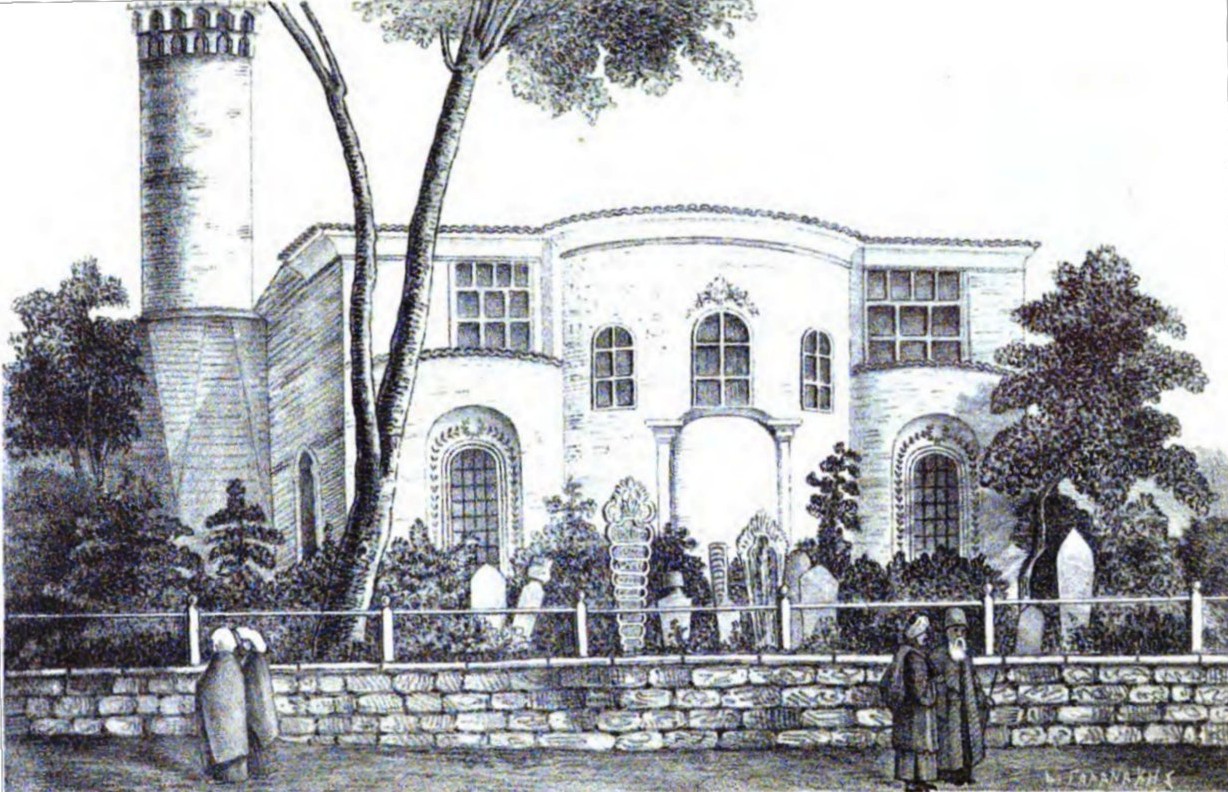Sekbanbaşı Mosque on:
[Wikipedia]
[Google]
[Amazon]
 Sekbanbaşı Mosque was a mosque located in the Ottoman capital of Constantinople (modern-day
Sekbanbaşı Mosque was a mosque located in the Ottoman capital of Constantinople (modern-day
 Sekbanbaşı Mosque was a mosque located in the Ottoman capital of Constantinople (modern-day
Sekbanbaşı Mosque was a mosque located in the Ottoman capital of Constantinople (modern-day Istanbul
)
, postal_code_type = Postal code
, postal_code = 34000 to 34990
, area_code = +90 212 (European side) +90 216 (Asian side)
, registration_plate = 34
, blank_name_sec2 = GeoTLD
, blank_i ...
). It was originally a Byzantine
The Byzantine Empire, also referred to as the Eastern Roman Empire or Byzantium, was the continuation of the Roman Empire primarily in its eastern provinces during Late Antiquity and the Middle Ages, when its capital city was Constantinopl ...
church. According to the writings of Hafiz Hüseyin al-Ayvansarayî (''Hadîkatü’l-cevâmi‘''), the original Byzantine church had been converted by İbrahim Ağa (died 1496–7), the lieutenant of the Ottoman sekban
The Sekban were mercenaries of peasant background in the Ottoman Empire. The term ''sekban'' initially referred to irregular military units, particularly those without guns, but ultimately it came to refer to any army outside the regular military ...
regiments (''sekbanbaşı''). The building was located in Kendir Sokağı, in the Kırkçeşme quarter ( Fatih district), near the ancient aqueduct of Roman Emperor Valens.
In 1838, the mosque was damaged by a fire, but underwent some restorations. In 1918, during the final few years of the Ottoman Empire
The Ottoman Empire, * ; is an archaic version. The definite article forms and were synonymous * and el, Оθωμανική Αυτοκρατορία, Othōmanikē Avtokratoria, label=none * info page on book at Martin Luther University) ...
, the mosque and the surrounding neighborhood were once again hit by a fire. This time, the mosque did not undergo reparations and was gradually abandoned. The heavily damaged fundament of the mosque was then completely torn down in 1943 as the Turkish government wanted to enlarge the Atatürk Boulevard. In 1954, the soil on which the mosque stood was completely cleared as apartment blocks were being built on it. Today, nothing extant of the mosque remains. However, just prior to its complete demolition, a hurried excavation was caried out by Semavi Eyice
Mustafa Semavi Eyice (9 December 1922 in Istanbul, Turkey – 28 May 2018 in Istanbul, Turkey) was a Turkish art historian and archaeologist, who specialised in the study of Byzantine and Ottoman art in Istanbul. Professor Eyice is widely re ...
, which unearthed some of the substructures of the Sekbanbaşı Mosque. These substructures were examined and surveyed on the spot.
References
Sources
* {{coord missing, Turkey Mosques converted from churches in Istanbul Demolished buildings and structures in Turkey Fatih Churches and monasteries of Constantinople 15th-century mosques Ottoman mosques in Istanbul Former mosques in Turkey